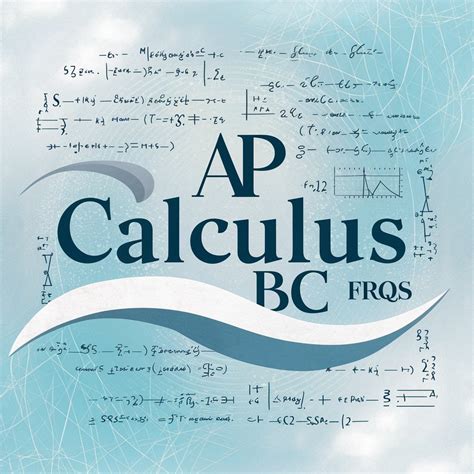Introduction

Preparing for the Advanced Placement Calculus BC exam can be a daunting task, but it is one that is essential for students who wish to pursue higher education in science, technology, engineering, or mathematics (STEM) fields. The exam is challenging, but with the right preparation and resources, students can achieve a high score and open up doors to future opportunities.
One of the most important resources for AP Calculus BC preparation is past Free Response Questions (FRQs). These questions are released by the College Board each year and provide students with an invaluable glimpse into the types of problems that they will encounter on the exam. In this article, we will provide a comprehensive overview of AP Calculus BC past FRQs, offering tips, tricks, and strategies for success.
Section 1: Understanding the Exam
Before we delve into the specific content of past FRQs, it is important to understand the structure and format of the AP Calculus BC exam. The exam consists of two sections:
- Section I: Multiple Choice (50% of the exam)
- Section II: Free Response (50% of the exam)
The Free Response section consists of six questions, each worth 10 points. Students are given 90 minutes to complete this section of the exam.
Section 2: Analyzing Past FRQs
Now that we have a basic understanding of the exam format, let’s take a closer look at past FRQs. The College Board releases a new set of FRQs each year, which can be found on their website. By studying these questions, students can gain a better understanding of the types of problems that they will encounter on the exam.
When studying past FRQs, it is important to pay attention to the following components:
- Problem type: What type of problem is being asked (e.g., optimization, related rates, limits)?
- Solution strategy: How can the problem be solved? What steps are involved?
- Common pitfalls: What are some of the common mistakes that students make when solving this type of problem?
Section 3: Tips and Tricks for Success
Here are some tips and tricks for success on the AP Calculus BC FRQ section:
- Practice, practice, practice! The more practice you have solving FRQs, the more comfortable and confident you will be on the exam.
- Start with the easiest questions. Don’t waste time trying to solve the most difficult questions first. Start with the ones that you feel most confident in.
- Show all your work. Even if you don’t get the correct answer, you can still earn partial credit if you show your work clearly and concisely.
- Don’t be afraid to guess. If you can’t solve a question, don’t leave it blank. Make an educated guess and you may get lucky.
Section 4: Common Mistakes to Avoid
Here are some common mistakes that students make on the AP Calculus BC FRQ section:
- Not understanding the problem. Make sure that you understand the question before you start solving it.
- Not setting up the problem correctly. Make sure that you set up the problem correctly and use the appropriate equations and formulas.
- Making algebraic errors. Be careful to avoid making algebraic errors when solving the problem.
- Not checking your work. Once you have solved the problem, check your work to make sure that you got the correct answer.
Conclusion
Preparing for the AP Calculus BC exam can be a challenge, but it is one that is well worth it. By studying past FRQs and following the tips and tricks outlined in this article, you can increase your chances of success on the exam and open up doors to future opportunities.
Additional Resources
- AP Calculus BC Past FRQs: https://apcentral.collegeboard.org/courses/ap-calculus-bc/exam/past-exam-materials
- AP Calculus BC Exam Preparation Guide: https://www.khanacademy.org/test-prep/ap-calculus-bc
- The College Board: https://www.collegeboard.org/
